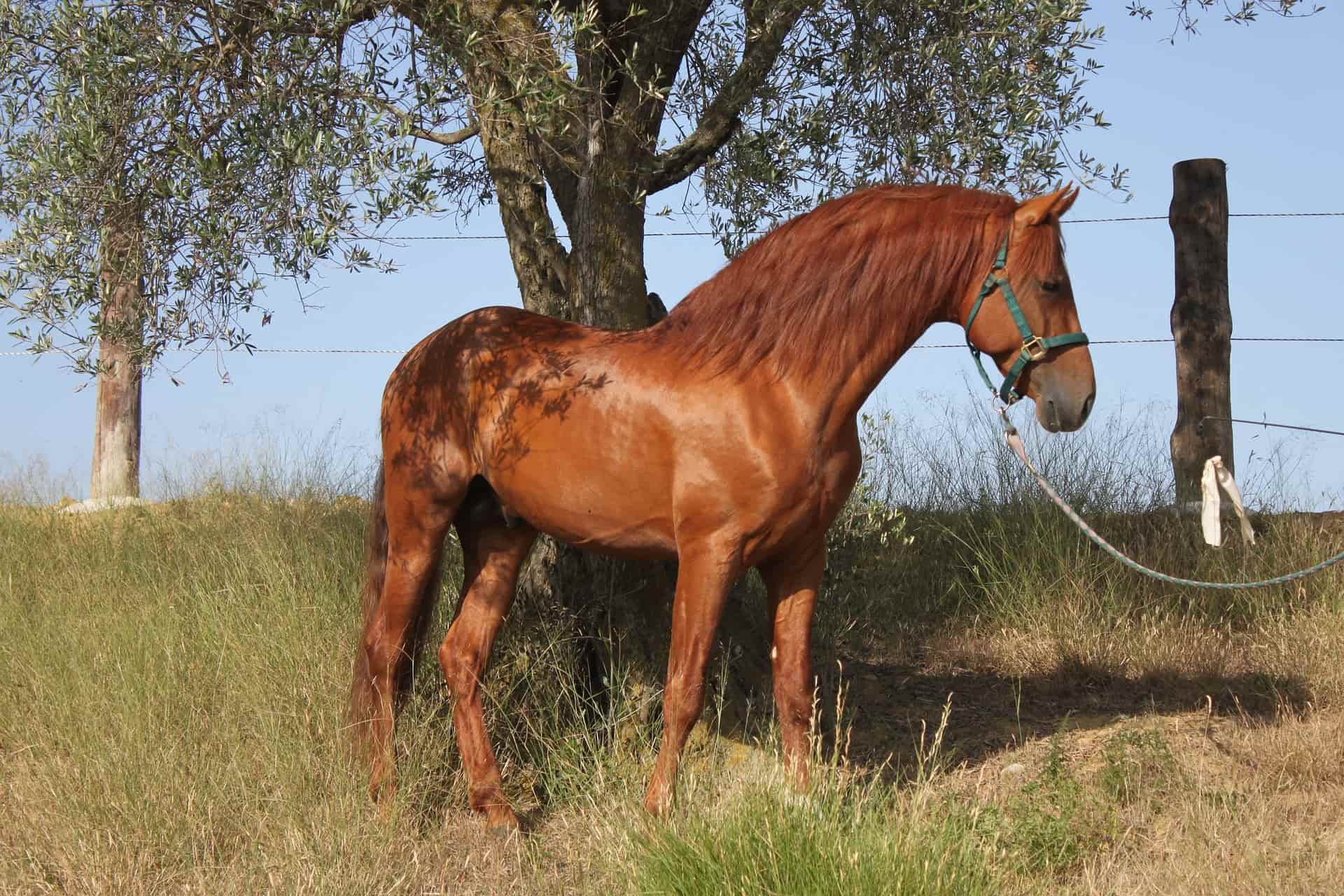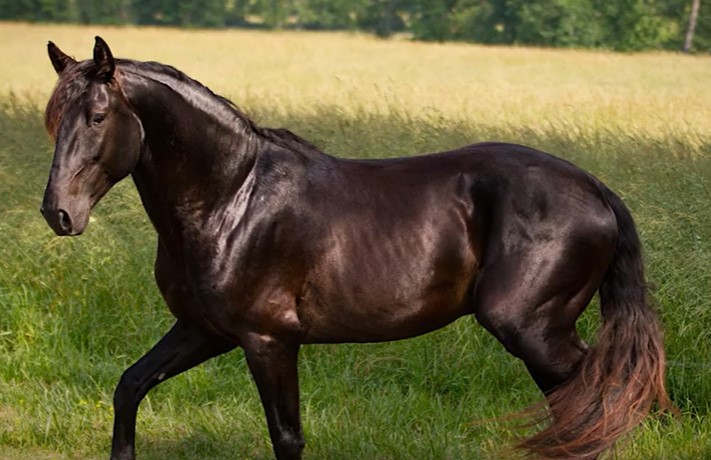Are you a regular jockey or horse rider? If you are, there’s a good chance that you never take your practice sessions outside the ring.
However, it’s good to take your horse for trail rides every once in a while. Not only does it supplement your arena work but it also boosts your confidence while simultaneously preparing your horse for tougher challenges.
That said, not every horse is ideal for trail riding. So, here we’re going to identify the ten best horse breeds for trail riding.
Best Horses for Trail Riding
1. Quarter Horse
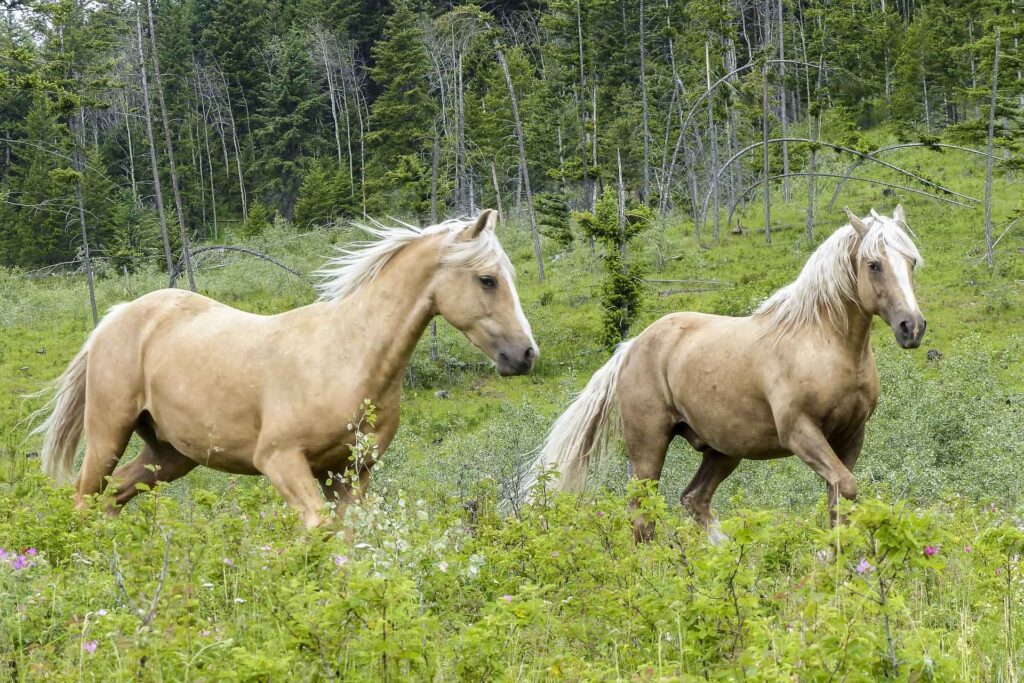
- Height range: 56 to 64 inches
- Weight range: 950 to 1,200 pounds
- Country of origin: United States
- Characteristics: Short and wide heads, heavy muscling, straight profile
With roots that date back to the 1660s, the American Quarter Horse is among the oldest breeds in the U.S. It originated as a cross between the Spanish and English horses.
Curious of how Quarter horses got their name? Well, they obtained this title based on their superiority in quarter-mile long races. Their impressive speed is one of the many reasons why they’re among the best breeds for trail riding and a great horse for barrel racing. More importantly, they’re very hardy horses capable of tackling anything they encounter on the trail.
What about the temperament of Quarter horses? Well, they’re adored for their gentle and calm nature, which is why they also make great family horses. Plus, they’re among the most intelligent breeds in the horse world – an aspect that makes them quite easy to train.
2. Appaloosa Horse

- Height range: 57 to 64 inches
- Weight range: 1,000 to 1,100 pounds
- Country of origin: North America
- Characteristics: Striped hooves, radiant and large eyes, mottled skin
If the American Quarter Horse falls short of your expectations, then consider the Appaloosa Horse which boasts fairly similar traits.
They have an almost identical height and weight range. However, the color patterns of Appaloosa are very different from those of Quarter horses. While Quarter horses tend to have solid colors, the Appaloosa breed is usually a blend of a base hue and an overlaid spotting pattern. These color markings are one of their most attractive features. They are often considered one of the most beautiful spotted horse breeds.
Like Quarter horses, Appaloosa horses have a docile and calm temperament. They interact pretty well with their human owners. But if treated poorly, they can be a bit aggressive and stubborn.
3. Tennessee Walking Horse
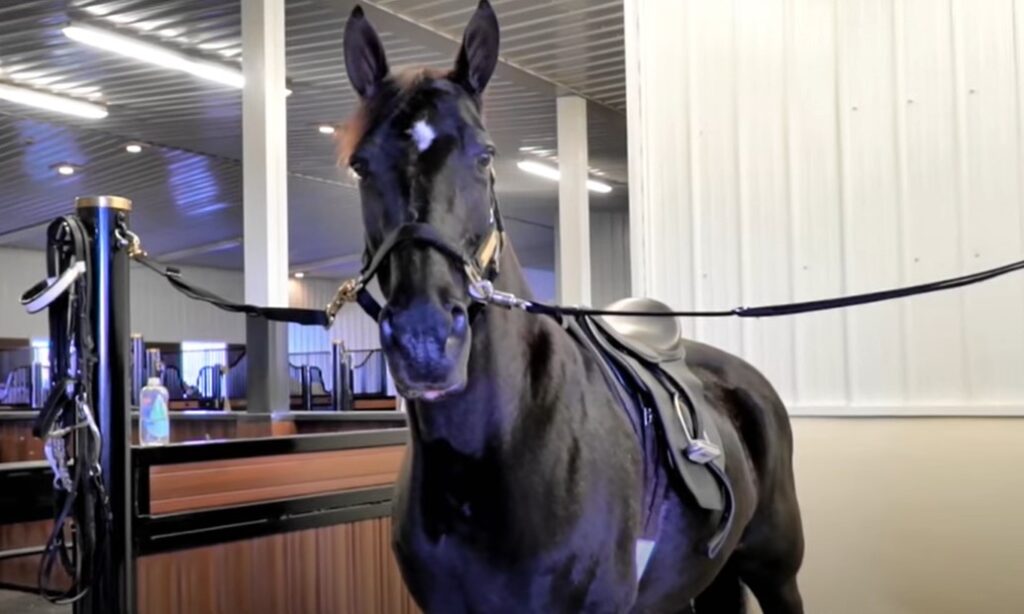
- Height range: 59 to 68 inches
- Weight range: 900 to 1,200 pounds
- Country of origin: United States of America
- Characteristics: Well-defined head, short and erect ears, long neck with free-flowing mane
The Tennessee Walking Horse is also known as the Tennessee Walker or the Plantation Walking Horse.
As you might have guessed, these horses are named after the state of Tennessee. Their most distinctive characteristic is their gait, which many like to call “the four beat running walk”. In this movement, the front foot hits the ground a moment’s notice before the diagonal hind foot.
Tennessee Walking Horses were originally bred to provide comfy rides to farmers who used to traverse rugged terrains. At the time, they were very handy for farm-related activities. However, the modern-day Tennessee Walking Horse is used for trail riding, understandably so.
These horses have a smooth gait and stamina, both of which enable them to tackle trails like pros. Learn more about this breed in our article featuring many interesting facts about the Tennessee Walking Horse.
4. Arabian Horse

- Height range: 57 to 61 inches
- Weight range: 800 to 1,000 pounds
- Country of origin: Arabian Peninsula
- Characteristics: Wedge-shaped heads, protruding eyes, laid-back shoulders and a short back
Arabian horses are ranked one of the best breeds for trail riding. One reason for this is that they exhibit impeccable endurance. They have a greater bone density characterized by strong hoof walls.
This enables the Arabian Horse to withstand long trail rides fairly well. In most parts of the world, the Arabian Horse is known primarily for its speed. But, it makes a good trail horse too.
Unfortunately, not everyone shares this opinion. Some riders argue that this horse breed is too spirited to make great trail horses.
While it’s true that some Arabian horses are incredibly sensitive, it’s not all of them. So it boils down to the individual horse that you pick.
If you pick one that’s high-strung, you might struggle to control it during your trail ride. But if you choose one with a calm demeanor, there’s no reason why you shouldn’t enjoy your ride.
To learn more about this breed, read our Arabian horse facts guide.
5. Australian Stock Horse
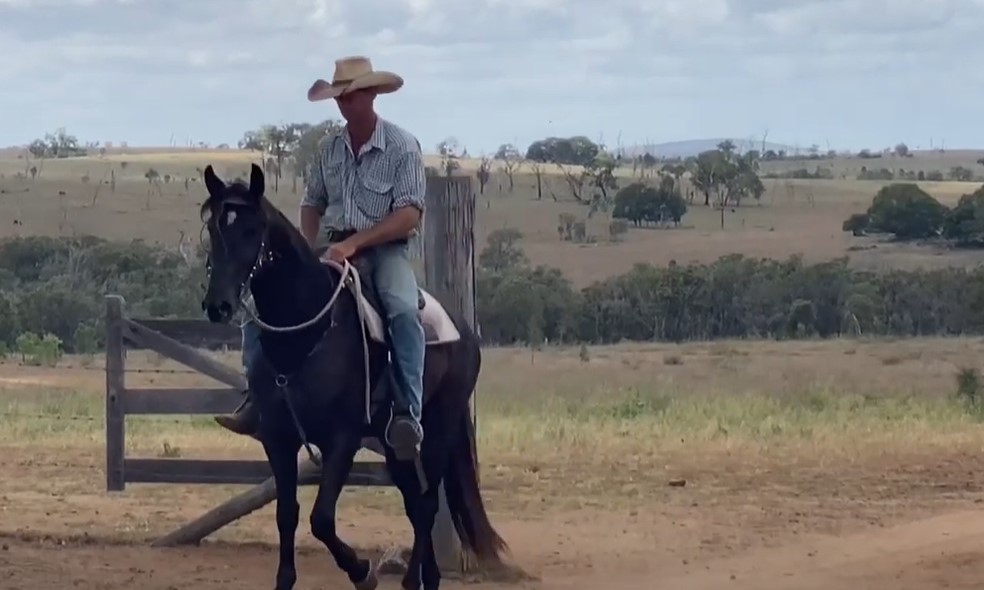
- Height range: 56 to 66 inches
- Weight range: 1,200 pounds
- Country of origin: Australia
- Characteristics: Deep chest, broad & strong back, and a sure-footed gait
The Australian Stock Horse was originally bred to handle the tough conditions found in Australia; both in terms of weather and terrain.
In fact, it’s developed to become one of the most versatile horses worldwide. In many parts of Australia, this breed is still used as a workhorse. Specifically, it helps to herd cattle, especially in mountainous terrain.
However, it’s the breed’s friendly temperament and sturdy physique that makes it perfect for trail rides. A fun fact about this horse breed is that it’s also referred to as the Australian Quarter Horse. This is not surprising given the physical similarities it shares with Quarter horses.
6. Paint Horse
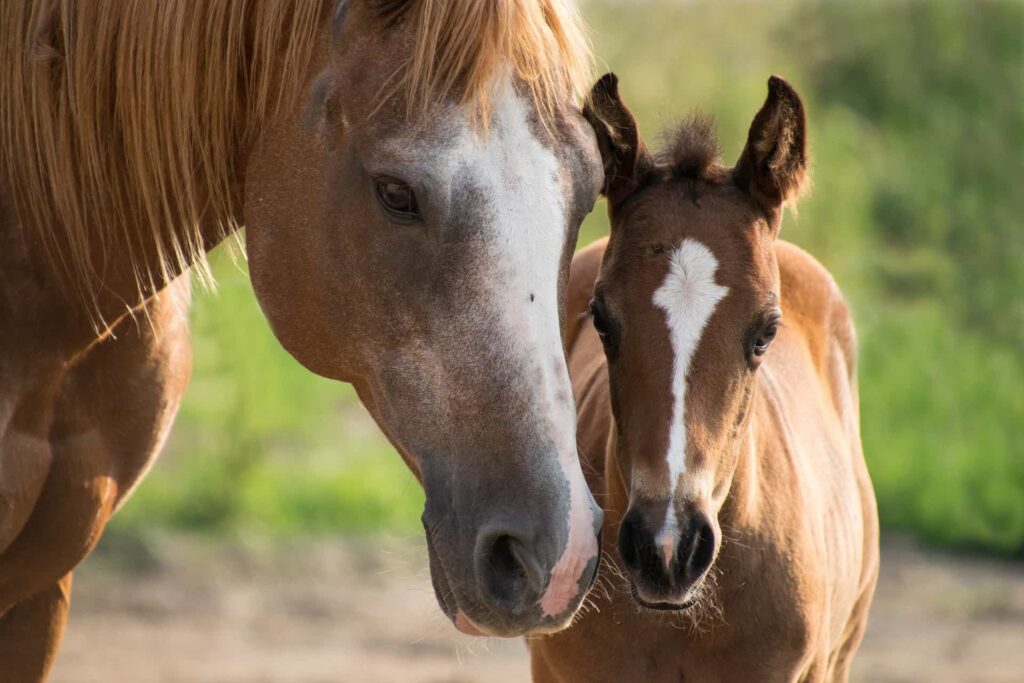
- Height range: 56 to 64 inches
- Weight range: 950 to 1,200 pounds
- Country of origin: United States
- Characteristics: Stocky but with a short back, robust legs and sloping shoulders
The vast majority of paint horses are pure-blooded, meaning they’re not mixed with other breeds. This is why you’ll find that every paint horse has a parent that’s registered in either the Jockey Club or the American Quarter Horse Association (AQHA).
As you might have guessed, paint horses have quarter horse blood infused in them. This explains why some of them are double-registered in the AQHA.
But what makes American paint horses suitable for trail riding is their bold temperament. They’re not easily spooked and are very patient with their owners. The American Paint horse is also revered for offering a smooth ride, even on rough terrain.
7. Spotted Saddle Horse
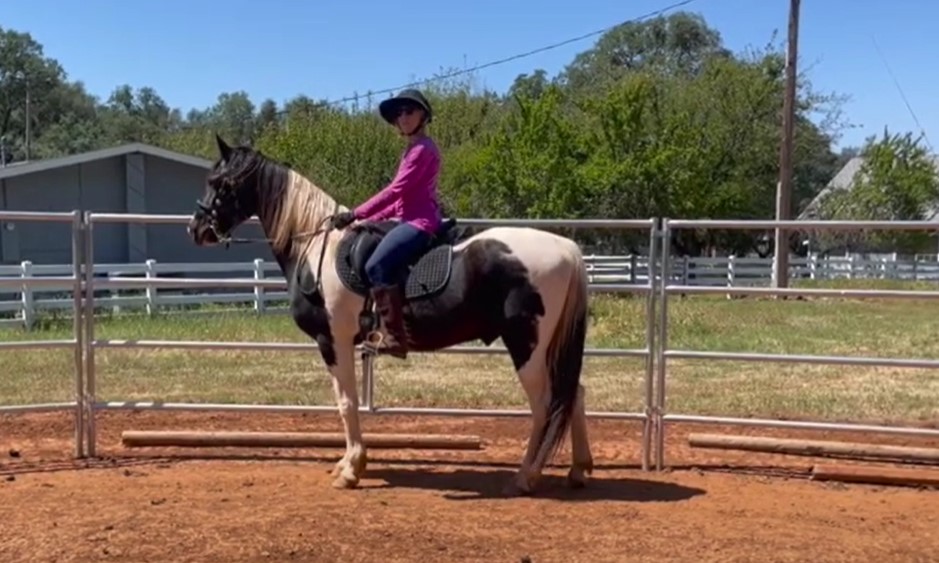
- Height range: 59 to 64 inches
- Weight range: 900 to 1,100 pounds
- Country of origin: United States
- Characteristics: Pinto coloring, lightweight with a well-refined head and strong stamina
Right off the bat, you’ll notice that Spotted Saddle Horses bear a striking resemblance to the Tennessee Walking Horses.
This is because the horse breed was developed by crossing the Tennessee Walker and Missouri Fox Trotter with pinto horses. This explains the gorgeous pinto coloring on Spotted Saddle Horses.
In addition to its intriguing history, the Spotted Saddle is quite a versatile horse. You’ll find it participating in numerous classes, such as in-hand, and pleasure classes. And thanks to its eye-catching look and comfy gait, it makes a great trail horse too.
One other reason why it’s considered the perfect trail horse is its temperament. The Spotted Saddle horse is loved for being calm and willing to learn.
8. Icelandic Horse
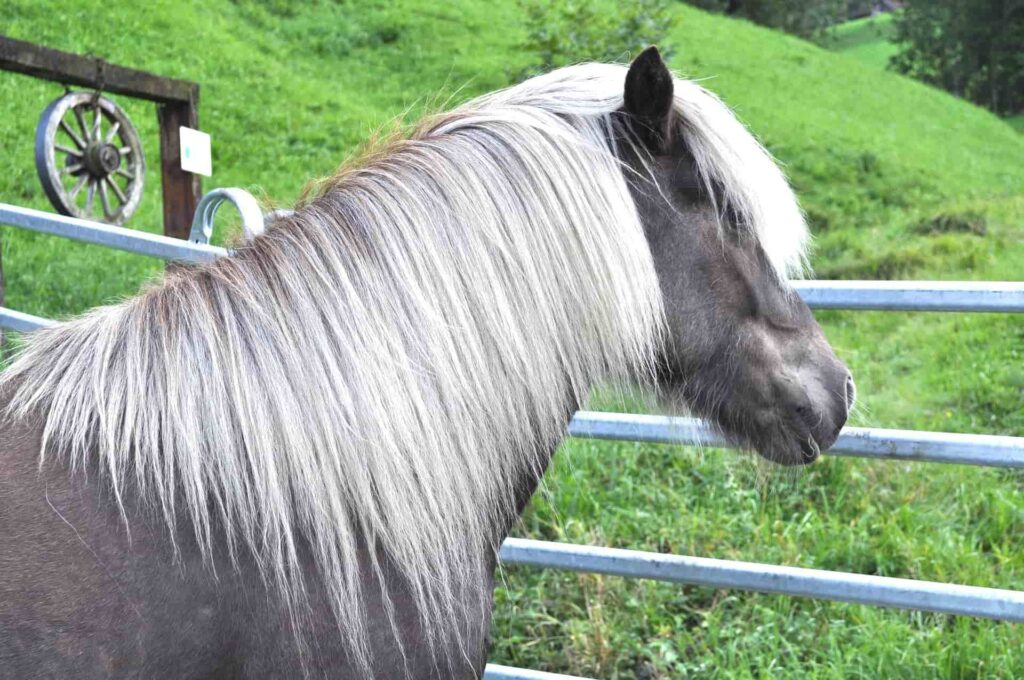
- Height range: 52 to 56 inches
- Weight range: 730 to 840 pounds
- Country of origin: Iceland
- Characteristics: Nicely-proportioned heads, short necks, sure-footed and hardy
As you might have guessed, Icelandic horses hail from Iceland. They live just a little below an average lifespan of about 25-30 years and are one of the smaller breeds listed here. The good thing about such breeds is that they’ve been bred in some pretty rough conditions, resulting in extremely hardy horses.
This is one of the core reasons why the Icelandic horse is ranked as one of the best trail riding breeds. Another reason why Icelandic horses make excellent trail riders is the fact that they’re sure-footed.
Since the beginning, the Icelandic horse was used to carry supplies in rugged terrains. It would traverse rivers, climb steep slopes and walk over lava fields. Due to this, Icelandic horses developed ultra-strong legs, hooves and sturdy backs.
Great trail horses ought to have mild temperaments, and Icelandic horses are the perfect examples for this. They know how to stay calm in times of uncertainty and are always eager to protect their rider.
9. Wild Mustangs

- Height range: 52 to 60 inches
- Weight range: 700 to 800 pounds
- Country of origin: Western United States
- Characteristics: Well-shaped head, wide-spaced brown eyes, sure-footed, sturdy legs
The Wild Mustang is a horse breed that originated from the Spanish horse breeds imported to the Americas around the 16th century. Their name is a blend of two Spanish words: mestengo” and “mostrenco” that translate to “wild cattle.”
In the true sense, Mustangs aren’t wild horses as they originate from a domesticated population. However, it’s not unusual to come across this horse breed roaming freely in some parts of the western United States. The majority though are kept in ranches and stables where they’re ridden like any other trail horse.
In fact, Mustangs are ranked one of the best horses for trail riding, and rightly so. Their hard hooves and muscular bodies enable them to navigate rugged landscapes that other breeds often struggle with.
10. Dutch Warmblood
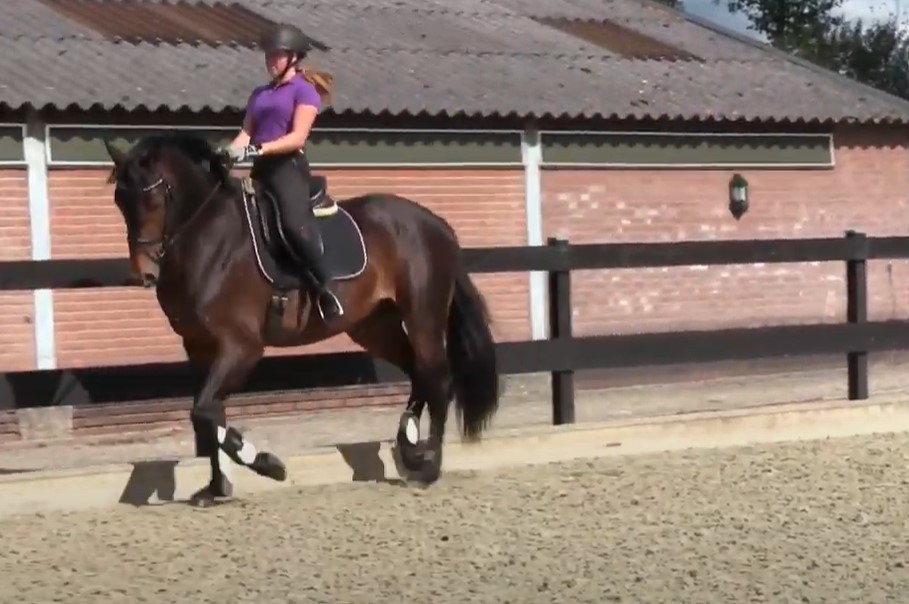
- Height range: 60 to 68 inches
- Weight range: 1,200 to 1,450 pounds
- Country of origin: Netherlands
- Characteristics: Straight profile, arched and stocky neck, and a long back
The Dutch Warmblood traces its roots to the Netherlands all the way back to the 1960s. At the time, these horses were used primarily for agricultural work. To thrive in this area, the Dutch needed hardy horses so they could pull carts and do other farm-related tasks effortlessly.
But as other forms of transport were discovered, most people stopped using horses to carry supplies.
The Dutch Warmblood, in particular, was crossbred with other horses – like Hackneys and Thoroughbreds. This is what resulted in the lightweight but athletic horses that you see today.
Currently, most of these high priced horses are used for the show ring. However, they also excel as trail riding breeds. The same skills that enable Dutch Warmbloods to thrive in equine activities like show jumping make them wonderful trail horses.
Tips for Choosing a Trail Riding Horse
To find great trail horses, there are a couple of things that you should consider such as:
Research different horse breeds
The first thing you should do is perform some due diligence. Research the most suitable horse breeds for trail riding, and list the ones that address your needs the best.
Take the horse for a ride
Don’t make the mistake of buying the first horse you come across.
Instead, you should take each of the trail horses for a ride; preferably in a controlled setting like a show ring. While you’re at it, focus on how each horse walks, runs and keep an eye out for signs of lameness.
Choose between a gelding, stallion and mare
If you’re new to the horse world, you probably don’t know the differences between these terms. On that note, a gelding is any castrated male horse while a stallion is an adult male horse. Meanwhile, a mare is an adult female horse.
So which of the three makes the best trail riding horses? In our view, the gelding makes a fantastic trail horse. It’s able to maintain calmness even when it’s around mares. Mares make great trail riders as well but stallions can be a bit problematic.
Seek help from an expert
If you’ve never bought a horse breed before, you might want to seek the opinion of an expert. Such an individual is more knowledgeable, which means they’ll be able to advise you on the best trail horses.
And since they have a wealth of experience, they will be able to spot issues that you’d have otherwise missed.
Prioritize conformation over beauty
A common mistake that riders make is to choose a trail horse based solely on its appearance rather than confirmation and experience.
But here’s the thing, if you were to encounter something on your trail ride, looks won’t help you. To guarantee maximum safety, always pick a trail horse that has sound conformation. For instance, it should be able to maintain its balance.
The ideal trail riding horse also has sturdy stamina, enabling it to carry you safely along narrow trails and cross flooding rivers.
Also Read: Can Horses Swim?
Ultimately, the idea of riding horses on trails is to enjoy scenery. If you choose a horse that can’t overcome such obstacles, your ride will be pretty short-lived.
Gaited Horse vs Non-Gaited Horse
The choice of gaited vs non-gaited horses typically boils down to personal preferences. If you’re not sure what the differences are be sure to read our article explaining what gaited horses are and how to identify them.
Some riders prefer gaited horses for trail riding, and understandably so. Since gaited horses are fast, the rider gets to cover a greater distance; hence, view more scenery.
However, there are other riders who prefer non-gaited horses because they’re slower. According to them, the slower pace of a non gaited breed allows the rider to take in the full scenery without being rushed.
The truth is, neither style of horse is superior to the other. So whether you choose non-gaited or gaited breed will depend on your needs.
You may also be interested to learn if gaited horses can jump while you’re at it.
FAQs
What is the best horse for mountain riding?
The Rocky Mountain Horse is the perfect breed for a trail ride through mountainous regions.
It has a comfortable gait – a factor that enables it to cover long distances without getting fatigued. As a result, the Rocky Mountain horse is often picked for cut-throat trail and endurance riding competitions.
Are thoroughbred horses good for trail riding?
Any horse that has thoroughbred bloodlines doesn’t make a great trail horse. Although they’re agile, intelligent, and fast horses, thoroughbreds are also very sensitive.
Related: Thoroughbred Horse Facts
Due to this, they scare easily, especially if they encounter something foreign on a trail. As such, they’re better off used for show jumping and competitive dressage. Read our article featuring the best dressage horse breeds for more great show horses.
Still want to take your thoroughbred for trail rides, then ensure you’re one of the most experienced riders. This way, you’ll be able to calm your horse down if they get spooked.
Suggested read: The Biggest Horse Breeds Ever
The Bottom Line
Riding horses, whether through a trail or in a show ring, confers several health perks. It boosts your cardiovascular strength and core strength, lowers your blood pressure and more.
However, not all horse breeds are suitable to take on trail rides. Excellent trail horses are ones that feel comfortable to ride and are capable of maintaining calmness when faced with uncertainty.
So what are some of the best horse breeds for trail riding? Quarter horses, the Appaloosa, Tennessee Walker, Dutch Warmblood and the Icelandic are the most popular horse breeds for this activity.

